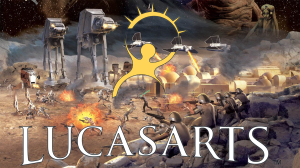When it comes to unlikely success stories in the video game industry, WayForward‘s Shantae franchise ranks pretty high on the list. The character made her debut in a self-titled Game Boy Color game released in 2002. At that point, the Game Boy Advance had long been available, and most gamers had moved on from the GBC. Despite this, Shantae managed to find a devoted fanbase, and the character is now starring in her fifth series entry, Shantae and the Seven Sirens. Whether you’ve been there since the beginning or you’re a newcomer to the franchise, there’s a lot to love in Shantae’s latest adventure.
Videos by ComicBook.com
Shantae and the Seven Sirens sees the game’s titular character on vacation. Shantae and her supporting cast have arrived on Paradise Island for a Half-Genie Festival, but she quickly discovers that the entire thing is an elaborate trap. Shantae manages to avoid capture, but her fellow Half-Genies are not so lucky, and players must uncover the island’s many secrets in order to rescue them.
While 2016’s Shantae: Half-Genie Hero took a break from the Metroidvania format, Shantae and the Seven Sirens represents a return to form for the series. For the uninitiated, the entirety of the game takes place across an interconnected, 2D map that slowly opens up as the player gains more powers and abilities. Upon rescuing each of her fellow Half-Genies, Shantae is given a new Fusion ability. With the click of a button, Shantae is able to briefly transform into another animal and use its powers to access previously locked-off areas of the map. In total, there are five different Fusions to find throughout the game.
In addition to Shantae’s ability to transform, the character can also gain abilities through the new Monster Card collecting system. When Shantae defeats her foes, it sometimes prompts them to drop a Monster Card. Each card grants Shantae an additional ability, and players can equip up to three at a time. The cards offer a number of different buffs; they might strengthen the damage done by Shantae’s hair whip or cause players to take no heart damage when falling in a pit. Players can also trade gold nuggets for rare cards and sell off duplicates that are picked up. Discovering what each card can do can be a highlight, but I found that I mostly stuck to the same three cards throughout the game. Completists will appreciate having something extra to search out, but it really isn’t anything groundbreaking.
As far as graphics are concerned, Shantae and the Seven Sirens is a gorgeous game. Paradise Island is vibrant and well-designed. One of the trickiest elements of creating a successful Metroidvania game is making a map that’s appealing and memorable, so players have less difficulty backtracking. Seven Sirens perfectly accomplishes just that. The character designs are every bit as strong. Everything has a wonderful style, whether it’s in the animated cut scenes or in the still images that appear during normal gameplay.
Humor has always been one of WayForward’s strongest suits, and that holds true for Shantae and the Seven Sirens. The game is quite funny and will likely elicit more than a few laughs out of players. Shantae is once again voiced by Cristina Vee, and her comedic timing is really strong. None of that humor would work, however, if not for the wonderful world WayForward has built up over the last 18 years. I found that Shantae and the Pirate’s Curse leaned a little too heavy on the continuity for newcomers, but Seven Sirens finds the sweet spot, offering references to the past without overdoing it. All of the series’ familiar faces are back, but new players don’t have to go play the last four games to understand the dynamic between each character and Shantae. Instead, they’ll likely be inspired to investigate its predecessors, and that’s a compliment to the developers.
Shantae and the Seven Sirens offers a fairly strong amount of content. The main quest can be completed in about 10 hours, depending on how much time players devote to searching out all of the various heart containers and Monster Cards. The game gives players access to a wealth of healing items, so it’s not an overly difficult journey. However, once the game has been completed, players can access a quest with fewer healing items.
All these years after that first Game Boy Color game, the Shantae franchise continues to deliver one of the most delightful experiences in gaming. Shantae and the Seven Sirens is funny, wholesome, and just plain fun. It also offers a killer soundtrack. Some might find that the main quest is a little too easy, and the Monster Card system doesn’t offer anything too significant, but these are minor quibbles. Shantae and the Seven Sirens is another great entry in an already strong series.
Rating: 4 out of 5
Shantae and the Seven Sirens is currently available on PlayStation 4, Nintendo Switch, Xbox One, Microsoft Windows, and iOS. A retail code was provided by the publisher for the purpose of this review, and it was reviewed on a base model Nintendo Switch.








